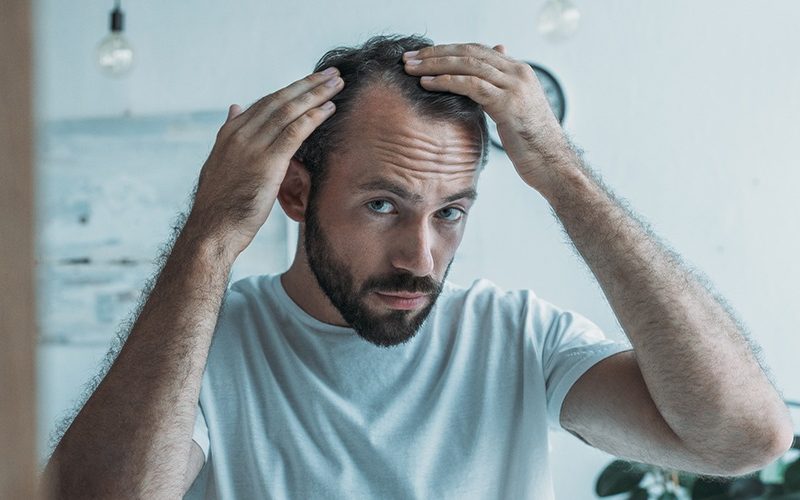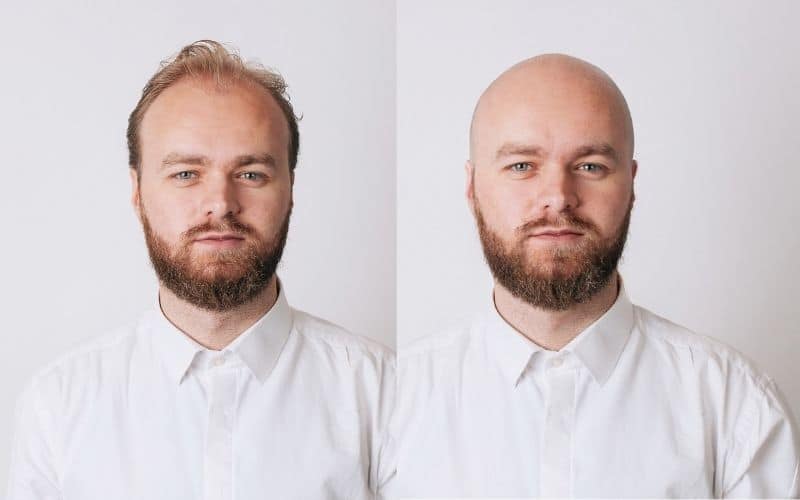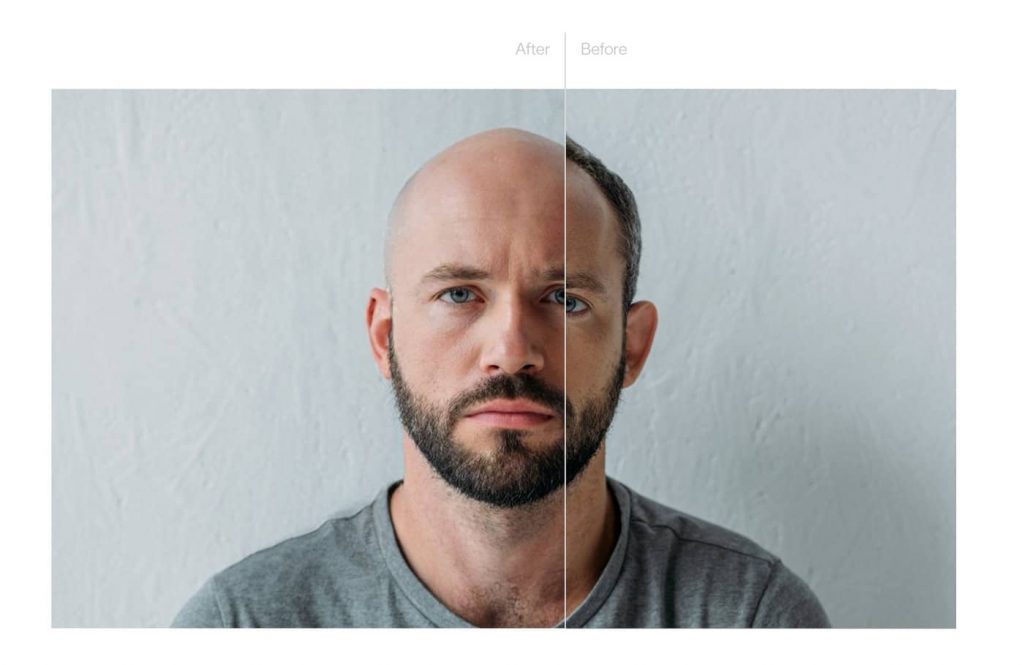Firstly, welcome. Welcome to acknowledgment. Whether you have accepted the fact that you’re losing your hair or not, you’re here and that is a great start. For many men, the first reaction is to find an effective hair loss treatment. A cure that will magically fix all their problems and bring the hair back.
Whilst it’s not that simple and will end up costing you a lot of money, energy and time, there are some options for you to consider.
Here at The Bald Company we like to advocate for embracing what you’re mother gave you (or didn’t give you). But no, her genetics are not the sole cause of your hair loss. In saying that, if hair makes you happy then we’re here to help and give you a bit of insight into every possible option. From hair transplants to shaving and embracing baldness, let’s take a look.
Why am I losing hair?
To start, we need to figure out your why. If you’re just noticing a few hairs here and there with no obvious patches of hair loss or thinning, then that is normal. Shedding up to 250 hairs a day is common and you can stop being so dramatic… for now.
Some men may be experiencing Telogen Effluvium which is a form of temporary hair loss. It can be brought on by medications, trauma, surgery, diet or any other extreme stress or strain to your body. This type of hair loss will resolve itself between 3-6 months. Consult a doctor to determine if this sounds like you.
For the majority of men – even those as young as 18 – male pattern baldness would be your answer. According to the American Hair Loss Association, over 60% of men experience some degree of hair loss by the time they are 35. This jumps to 85% by the age of 50.

Is it possible to regrow hair?
This depends on the health of your hair follicles and how long it’s been since sprouting any hair. Follicles can close or disappear (sometimes due to scarring) completely during the hair loss stage and especially after significant time, it loses it’s ability to re-sprout. If you’re hair follicles are still around, then it is definitely possible.
Can baldness be cured?
Sadly, no. But there are ways you can halt the process and have potential to grow back or thicken existing hairs.
So without further ado…
What are my hair loss treatment options?
If you are only just recently noticing a bit of a receding hairline, thinning or bald patches and it’s early days, it’s important to get on top of it fast.
Below are the best options to keep that receding or thinning at bay.
Minoxidil
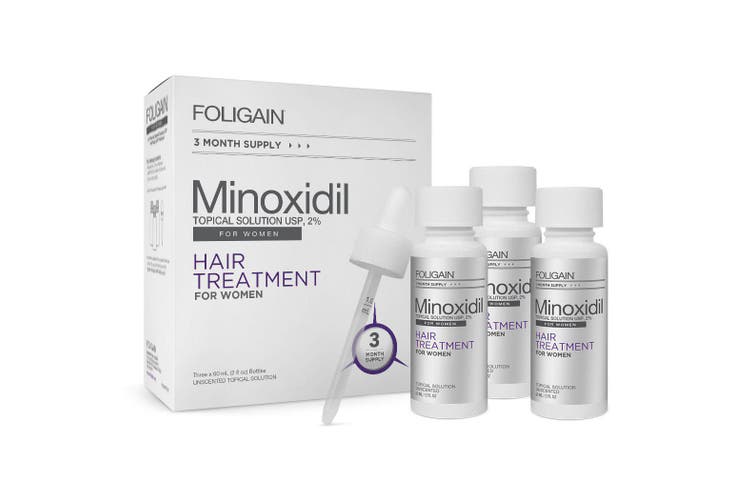
Finasteride
Found in Propecia, Finasteride acts as a DHT blocker. DHT is a male sex hormone that is five times stronger than testosterone and strongly linked to men’s hair loss. It clings to hair follicles causing them to shrink and stop growing hairs, but DHT blockers stop the process of testosterone turning into DHT.
Finasteride comes in a pill form and is said to decrease DHT levels in the scalp by up to 70%. Mostly used to halt the process of male pattern baldness, it can sometimes result in new growth. During studies, 86% of men treated maintained or showed an increase in hair count.
Often Minoxidil and Finasteride can be used successfully simultaneously. Consult your doctor or specialist before doing so.
The drawbacks to both of the above options is that you have to take pills and apply serums consistently, every day, for the rest of your life. As soon as you stop, the process of hair loss will begin again.
Ketoconazole shampoo
An anti-fungal treatment most effective on people with skin inflammation on the scalp. This kind of irritation can cause hair shedding and/or thinning. The shampoo comes under many different brand names with one of the most common being Nizoral.
There are less side effects associated with this type of solution, but results are not as obvious. In saying that, it could be a great addition to work alongside one of the above treatments.


Saw Palmetto
Worried about side effects from unnatural sources? Try this natural remedy. Saw Palmetto is a berry that has been used in traditional Native American medicine for hundreds of years. Research on this treatment is limited but so far the berry has been found to naturally block DHT (similarly to how Finasteride does). But both should not be taken at the same time.
You can get Saw Palmetto in many different forms including as dried berries, capsules or liquid extract.
Be wary if you are on other medication as saw palmetto has been shown to thin blood. It shouldn’t be taken with aspirin and some prescriptions such as warfarin.
Hair replacement surgery
If you’re past the point of pills and creams or you just want more guaranteed results and aren’t scared of needles, then you could look at having surgery. There are several different techniques that can be used which we will explain below.
Hair transplant
The most common method that people know of and refer to are hair transplants. This surgery requires some healthy hair follicles (usually around the base of the head) which act as donors. The follicles are surgically extracted either one by one or by removing a strip of skin, sectioning it and then scattering the sections on the top of your head.
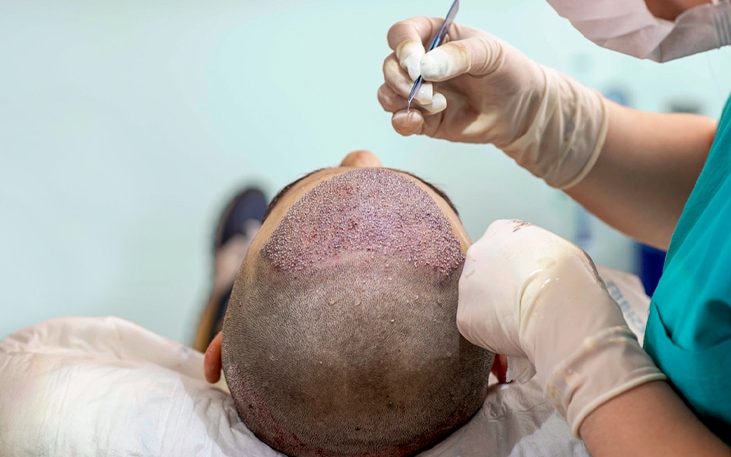
Tissue expansion
This process works on people who have a healthy patch of hair next to their balding patch. A device called a tissue expander is inserted under the skin of the healthy hair follicles. Over time, the skin will grow more cells to cover the expanded area. After a few weeks, a surgery is completed to move the new skin cells over to the bald area.
Flap surgery
This works for those with larger bald patches. During this type of procedure, a portion of the hairless area is removed and replaced with a flap of healthy hair and skin taken from the back or side of your head whilst still connected to the original healthy blood supply.
Scalp reduction
This one and the last one are sort of terrifying to imagine, don’t you think? But essentially, the bald section of scalp is removed and hair-bearing sections are then pulled together over the area to cover it. This technique can only really be done in smaller areas surrounded by normal hair growth.
Flap surgery and scalp reduction are rarely performed anymore due to the advancements of hair transplants. In rare cases, however, they may be the best option.
As you can probably imagine, all of these options do come at a price and several surgeries are usually required. Side effects can include scarring, bleeding and infection. There is also the risk of grafts not taking or ending up with patchy results which will lead to more surgery. They also don’t stop future hair-loss so you may need several surgeries over time.
PRP therapy
Platelet-rich plasma therapy is a new technique to keep an eye on. The process involves taking healthy blood cells and injecting them into the scalp. It does involve three initial sessions and continuous visits every 4-6 months though. Having not been studied enough to prove its efficiency, we wouldn’t recommend this just yet but who knows where this technology could take hair loss treatments in the future.
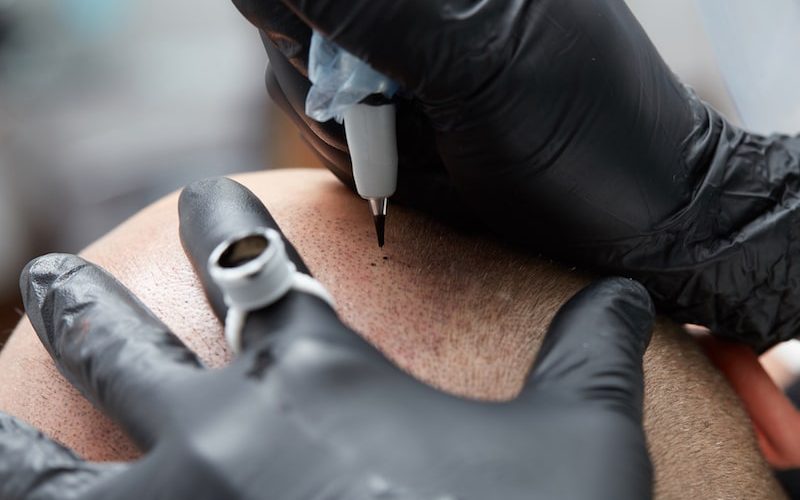
Hair tattoo (micro-pigmentation)
Whilst not exactly a treatment as such, hair tattooing can be a great cosmetic procedure option. The process involves tattooing small hair coloured dots on the scalp to mimic the look of hair follicles. It works well to add the appearance of thickness and even create a new hairline.
We recently spoke to a scalp micro-pigmentation practitioner and you can see the results of hair-tattooing for yourself.
Natural treatment options for hair loss
If you have temporary hair loss (not male or female pattern baldness), there are some natural remedies you can use to improve circulation in the scalp to stimulate growth.
Rosemary oil
Anti-inflammatory properties can improve circulation by rubbing a small amount on the area.
Aloe vera
Not only good for sunburn, active ingredients including many enzymes and minerals could stimulate hair growth.
Massaging
By putting pressure on the area, this encourages blood circulation which in turn can help with hair growth.
What is the number one hair loss treatment?
With all of these options, what is the best one? That will really depend on an individuals progression of hair loss. If you’re in the early stages of balding, consult your doctor about minoxidil and/or finasteride. If you think you’re too far gone for those options, then consult with a doctor to ask about a surgical option. Or just shave it off! Thats really the most cost effective and stress free solution in our eyes.
What is the permanent solution for hair loss?
Unfortunately no solution is permanent. Of them all, hair transplants do last longer term, but you will most likely need additional surgeries as you age and more bald patches pop up.
How can I restore my hair loss?
Now that you know all of your options, we strongly recommend visiting a dermatologist and doctor to assess what will be the best option for you. You may even impress them with all of your hair loss treatment knowledge.
Don’t forget to tell them we sent you.

